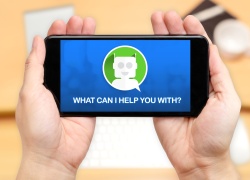
“Chatbots are coming”, is probably an understatement today. In fact, chatbots have arrived, and are redefining the way we interact with people and software systems around us. They can be seen across organizations doing multiple tasks such as handling customer support tickets, taking orders, resolving employee queries, screening candidates and many more such activities. Chatbots adoption is driven by enhanced richness in conversations brought about by NLP and AI.
Chatbots can also play a significant role in the learning and education segment consisting of universities, schools, e-learning portals and students. Below are some situations where a chatbot would come in really handy.
- Assisting a student seeking admission at the university
- Resolving student queries while taking a course (more so in online courses)
- Assisting a new student on campus
- Bot performing the role of a teaching assistant
- Bot advising a student on appropriate courses
- Bot assisting with queries regarding scholarship
Let us elaborate on the 5th case to see how exactly a bot could help a student in deciding on a course.
Imagine a situation where in a student Daniel has interest in robotics and wants to enroll in a course on robotics. The question which confronts Daniel is which course I should choose. We all have been students and can relate to the Daniel’s dilemma. Usually in such a situation, one would rely on suggestions from friends and teachers. The bot play can play an important role in helping Daniel to find the appropriate course. The bot would ask Daniel questions regarding his current proficiency level, interest areas and when he wants to enroll. Once done, the bot would provide the list of available courses. Daniel could then seek answers to more questions like who is the instructor for a course, are there any pre-requisites for this course, what are the learning objectives of the course, when does the course run and etc. The answers to these questions would help Daniel choose the most appropriate course. The best part about doing this with a bot is you can do it 24X7 and as many times as possible. Once Daniel has decided on the course, the ability to enroll in a course can also be delivered through the bot.
Similar to above example, there are many areas where chatbot could make an impact in learning ecosystem. Such chatbots can be taken to the next level with use of machine learning. A bot suggesting you courses based on feedback given by people similar to you, or a bot using psychometric assessment as input for suggesting courses are just some of the examples.
An important consideration with chatbots is the way they are delivered to the end users. Studies have shown that users spend more time on messaging apps like Facebook Messenger, Slack, Whatsapp, etc as compared to mobile app. To enable better adoption and engagement it would be advisable if the chatbot experience is delivered through such messaging apps.
Reading through the situation and advantages, the next question which comes to mind is how can one build such a bot? Well, one could use a readily available solution or build one using available bot framework and services. The decision would really depend on factors such as technical expertise, functionality needed and time to market.
Other industries and segments have already taken the first steps towards chatbots, its time that universities and e-learning portals also be a part of this change.






